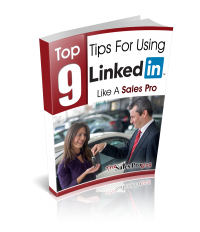 This post first appeared on Career Attraction, advice from experts that gets results.
This post first appeared on Career Attraction, advice from experts that gets results.
Imagine if you were selling a product so unique you were the only person offering it. A product developed to command top market value, where you could name any price to any buyer.
Would you believe it if I told you there is such a product? It’s called your professional brand.
Your professional brand or personal brand is the culmination of your online and offline professional life that you’ll put in front of employers, recruiters and hiring managers. It’s made up of your skills, knowledge, network, etc and has a direct impact on your future income potential.
When searching for a new career, having a strong brand is no longer a nice-to-have; it’s a must-have. ~ Tweet This!
So then why do so many job seekers neglect this part of the job search? Why don’t they put in the time and energy required to build a solid brand they can sell to employers? In addition, why don’t they develop the skills necessary to sell their brand?
Perhaps they…
- Don’t understand its importance;
- Don’t know it’s possible; or
- Simply don’t know how to do it.
It may seem like a daunting task, but it’s well worth it to develop a brand so strong your professional reputation precedes you.
I remember a past interview where I was flown across the country to meet with a senior sales team. When I sat down for my interview, I was a bit surprised to find they had stumbled upon my previous professional blog and wanted to talk about it. The hiring manager said he’d never seen someone so passionate about what they did, especially considering I had only been in the industry for a couple of years. From his perspective (an outsider to the industry), I truly looked, acted and sounded like an expert in my field.
This shouldn’t have surprised me since my brand was well-developed and widespread. But at the time, I didn’t realize what I had done or the potential positive influence building a brand like that would have for me as a job hunter. Nor did I have an organized way to explain it. But when I realized what had happened, I worked hard to organize my thoughts and processes and landed on three basic principles to selling my brand.
How to command top market value for the product of you: Build, Control and Focus. ~ Tweet This!
First Things First: Build Your Brand
It’s hard to sell something that doesn’t exist. So your obvious first step is to focus on building your brand as a professional.
Although it won’t happen overnight, you might be surprised to know that — in some form or another — your brand is already out there floating around in cyberspace. Your job is to now gather, strengthen and optimize it.
 The most important thing to do as you start that process is to decide what your “home base” is going to be. This is the tip of the pyramid, the focal point for your brand and the main repository of your expertise.
The most important thing to do as you start that process is to decide what your “home base” is going to be. This is the tip of the pyramid, the focal point for your brand and the main repository of your expertise.
Most professionals have a website or blog as their home base. You can absolutely use free services like WordPress.com or Blogger, but it’s my firm belief that you should get a self-hosted website.
If your name is available, great — if not (JohnnyBravo.com wasn’t available for me) then use something that relates to your brand.
For me, it was sales and SalesProBlog.com. For you it might be coding and PHPCodeByJane.com, academics and ScienceTeacherJim.com, or maybe decorating and DustysHomeDecor.com.
If a dot com isn’t available, don’t worry about it. You can use any of the available domains, but try to stick with .com, .org or .net if you can.
Now that you have your home base set, you’ll want to find the sites that will be the foundation of your professional brand pyramid.
This is easy to do with a simple Google search.
If you haven’t already worked on developing your brand, there will be a few random profiles of yours out there with outdated information. Don’t worry; this is a good thing.
What you want to do now is sign up for every site you find with information about you (most are free) . Most of these sites allow you to take control of the information listed about you if you give them a little more to fill their site with.
What you do now is link all of these sites to your home base. By doing this, you’re saturating the Internet with your brand and directing potential employers to your home base. These sites are already being found when someone searches your name, so all you have to do now is control the message….more on this soon.
If you haven’t already, be sure to sign up for the big social media sites (Facebook, Twitter, LinkedIn, Pinterest, etc.). These tend to do very well in search engines, so you definitely want them to have your information. And I don’t mean any personal accounts you may have on these platforms; set up new ones if needed so they match your brand image.
If you want to go the extra mile, go ahead and take each of your major social media profiles (or the sites that rank best for your name) and have them focus on a single skill set.
If you’re in sales, each site may focus on skills like prospecting, negotiations, account management and networking. If you’re a computer programmer, you may want to have sites that focus on PHP, C++, Python, Java and Ruby. Keep your list down to three to five skills, though. You don’t want to go overboard and spread your brand too thin. Keep it relevant and concise.
By the way, if you have a blog, you can do this as well. Just create different pages or categories for each skill you want to focus on.
This sets you up nicely for the next step:
Control Where Employers Go and What They See
Now that you have your home base and secondary sites set up, you’ll want to point recruiters and hiring managers to these various avenues.
Like a resume, you want your brand message to be personalized to each employer or position.
Do some research (actually, do a lot of research) and find out which of the sites or topics within your brand would be most appropriate for this particular employer.
I’ll continue with the sales and programming examples from before. For sales, if I were applying for a business development role, I’d want to point employers to the page about prospecting. If I were applying for a more senior account executive role, I might point them to the page that highlights my skills as a negotiator.
For programming, If I were applying for a company that recently started using Ruby, I’d point them to my page about my Ruby skill set. Or if the company is working on a new initiative to start adding apps to their repertoire, I’d point them to the appropriate page highlighting my skills and projects in that area.
Personalize your resume to include a link to your home base or the skill site of your choice. Many online applications now ask for a “website” so use the appropriate link to the site you’ve chosen for them.
In every interaction tailor your message to show only the brand you want to show. By doing that you point employers in the right direction and help them find everything they’d want to know about your potential as an employee.
Focus on the Strengths That Matter
The point here is that you want to only focus on the strengths that are important to that employer. If you’re applying for a job as a PHP Web designer, you don’t want to put much focus on your Python or Ruby skills. I’m not saying they aren’t important, simply that they aren’t as important.
For every employer, focus on the top three skills you think they would most be interested in.
This allows you to keep your brand strong and undiluted, while giving you some flexibility in the skill set you show a particular employer.
When I’m in front of a client selling my wares, I don’t try to sell them every single product my company provides. That’s not selling; it’s talking. I listen, I learn and I tailor my message and product offerings to what is important them.
This is most easily done by taking note of the keywords mentioned in a job posting. What are the requirements, what are nice-to-haves and what is the company looking for that you can help them with?
You want to make it personal and make the employer feel like you two are a perfect fit for each other.
Start Early and End Late
One last note. As I mentioned earlier, you can do a simple Google search and find the small Web footprint that encompasses your brand right now. This footprint will be there before you reach out to a potential employer, whether you like it or not. Because of this, it’s important for you to start NOW.
If you’re in the market for a new job, do the above steps right away. Even if you aren’t in the market, do the above steps right away! You need to start developing your brand as soon as possible.
A great way to start early is to reach out to hiring managers with tidbits that showcase your expertise. This is an excellent way to stand out from the piles of resumes a recruiter receives every day. Of course, you should still go through the normal channels of applying online or through their HR department — but also send them articles you’ve written or are featured in.
By doing this before the interview process, you’re differentiating yourself from everyone else.
And, of course, even if it’s decided that you aren’t the right fit for the job, be sure to continue reaching out. A simple thank you letter in the mail can go a long way. Who knows; they might introduce you to another company or position down the line.
What other ideas do you have for “selling” your brand?
~ Johnny Bravo
“Image courtesy of Teerapun & Stuart Miles / FreeDigitalPhotos.net”


{ 0 comments… add one now }